Growing Haworthias indoors is as easy as outdoors. They grow better with an indoor arrangement, filtered light, average temperature, and humidity. But in reality, are haworthia indoor plants or outdoor plants?
As a general rule, Haworthia can be grown outdoors in USDA zones 9 to 11; for the rest of the regions, they do better when grown indoors. When kept indoors, haworthia prefer a warm and stable living environment with bright indirect light. They are primarily grown in pots inside our homes.
If you are looking for a low-maintenance succulent that takes a small place in your home, try Haworthia. In this article, we shall discuss why Haworthia is more suitable as a houseplant and how to care for them indoors.
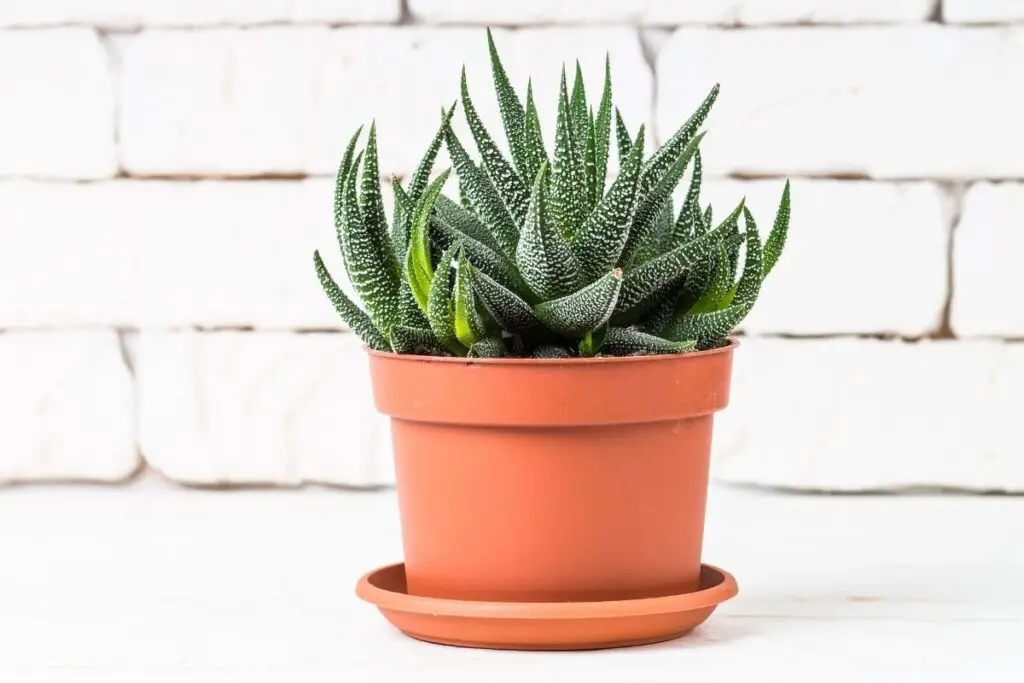
Is Haworthia an indoor plant or an outdoor plant?
You cannot rigidly claim Haworthia to be only a houseplant or an outdoor plant.
Though most people grow them indoors, they can be grown outdoors too.
As they grow over rocky lands in their natural habitat, they will stay outdoors over rocky beds at ease.
If your region receives mild and cool winter, you can seamlessly grow them outdoors.
There won’t be any harsh but cool winters, which is tolerable for Haworthias.
They will stay outdoors safely without any frost damage.
But if your region receives temperatures ranging below 30°F in the winters, grow them in containers so you can take them indoors.
It will save them from the harsh cold temperatures and prevent them from undergoing cold damage.
So, Haworthias are suitable for both indoor and outdoor settings.
Whether Haworthias will do best indoors or outdoors depends mostly on the weather conditions of your region.
That’s why you cannot precisely call them an indoor or outdoor plant.
What makes Haworthia a true indoor plant?
It is their requirements that make them a true indoor plant.
- They thrive well under indirect sunlight, which you can achieve perfectly indoors. You can use artificial lights in low light conditions, which are easier to fix indoors than outdoors.
- They need a temperature ranging between 65 to 75°F, a perfect room temperature tolerated by humans.
- They require a humidity level which is, again, tolerated by humans. 25 to 40% of humidity is suitable. Some varieties can tolerate 50% to 60% approximately, for example, Haworthia attenuata.
- Haworthias are not at all frost-tolerant plants. They like serene winters. Indoors, they will get mild cold in winters.
The above features conclude that Haworthias grow best when they get an indoor light along with room temperature.
Due to these features, Haworthias are considered a true indoor plant.
What are the basic indoor requirements of Haworthia?
Taking care of Haworthias indoors is not very different from outdoors.
As you go through the care tips, you will understand how easy Haworthias are to grow indoors.
So, let’s begin without further delay.
1. Keep them near a window giving bright indirect sunlight.
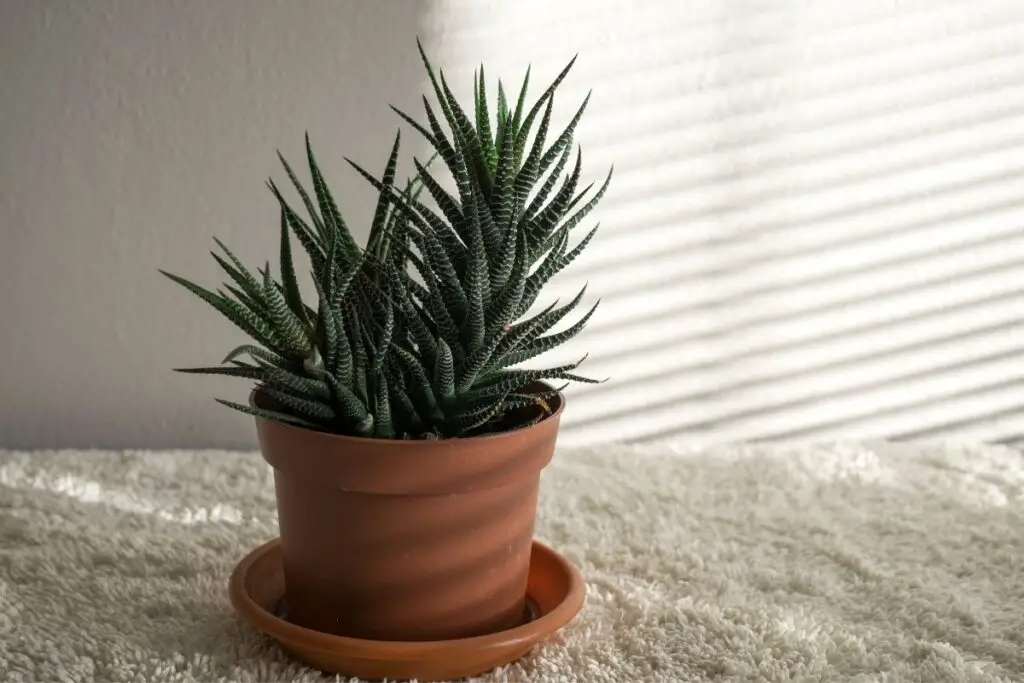
In their natural habitat, they remain under shades of shrubs and grasses.
Bright, indirect sunlight for 3 to 4 hours is best for their growth.
The south or west-facing windows give direct sunlight.
Put on sheer curtains to filter the light if your Haworthias are placed in these directions.
You can also place them near an east-facing or north-facing window.
It gives them perfect, mild, indirect sunlight. As the day progresses, the sunlight fades.
Eventually, Haworthias will need bright filtered light for some hours.
It helps to maintain their color and prevent fungal growth.
If they are near a west or south-facing window, remove curtains in the morning for a few hours.
When the sun gets intense, after 11 am, put back the curtains.
The light they receive indoors might not be enough for Haworthias, especially during the winters.
Fix fluorescent lights with traditional, cool white lights or new LED light systems.
Also read: How Much Light Does Haworthia Need? (Haworthia Light Requirements)
Looking for gardening supplies? We have tested 100's of products before recommending them to you guys. Check out our best pick below:
| Image | Gardening Supplies | Best Price? |
|---|---|---|
 Top
Top Top
Top | Raised Garden Bed Kit | Check On Amazon |
 | XLUX Soil Moisture Meter, Plant Water Monitor, Soil Hygrometer Sensor for Gardening, Farming, Indoor and Outdoor Plants, No Batteries Required | No Results |
 Top
Top Top
Top | 82 Pcs Garden Tools Set and Extra Succulent Tools Set | Check On Amazon |
 | Joeys Garden Expandable Garden Hose with 8 Function Hose Nozzle, Lightweight Anti-Kink Flexible Garden Hoses, Extra Strength Fabric with Double Latex Core, (50 FT, Black) | No Results |
 Top
Top Top
Top | Dual Chamber Compost Tumbler | Check On Amazon |
 Top
Top Top
Top | Sunnyglade Plant Stakes | Check On Amazon |
 Top
Top Top
Top | Organic Cold Pressed Neem Seed Oil | Check On Amazon |
 Top
Top Top
Top | Mighty Mint Gallon :-Insect and Pest Control Peppermint Oil | Check On Amazon |
 Top
Top Top
Top | Scotts DiseaseEx Lawn Fungicide | Check On Amazon |
 Top
Top Top
Top | Jacks Classic 20-20-20 All Purpose Fertilizer | Check On Amazon |
 Top
Top Top
Top | 30,000 Seeds Pollinator Attracting Wildflower Mixture | Check On Amazon |
 Top
Top Top
Top | Survival Vegetable Seeds Garden Kit-Over 16,000 Seeds | Check On Amazon |
2. Water them according to the seasons.
Haworthias need water at different frequencies depending on the seasons.
Water frequently every 2-3 weeks in their growing seasons, i.e., spring and fall.
Don’t water them during the summers since it is their dormant period.
Else, they will face overwatering and root rot.
Double-check the moisture level and give them little water when the full soil is dry.
They will absorb less water in the winters due to low evaporation and slower growth.
Water the Haworthias once a month. Otherwise, they will suffer overwatering and root rot.
You must always check the moisture before watering.
If a few inches of the topsoil are fully dry, the plant is ready for watering.
Also read: How Often To Water Haworthia? (Haworthia Water Requirements)
3. Plant Haworthias in well-drained soil.
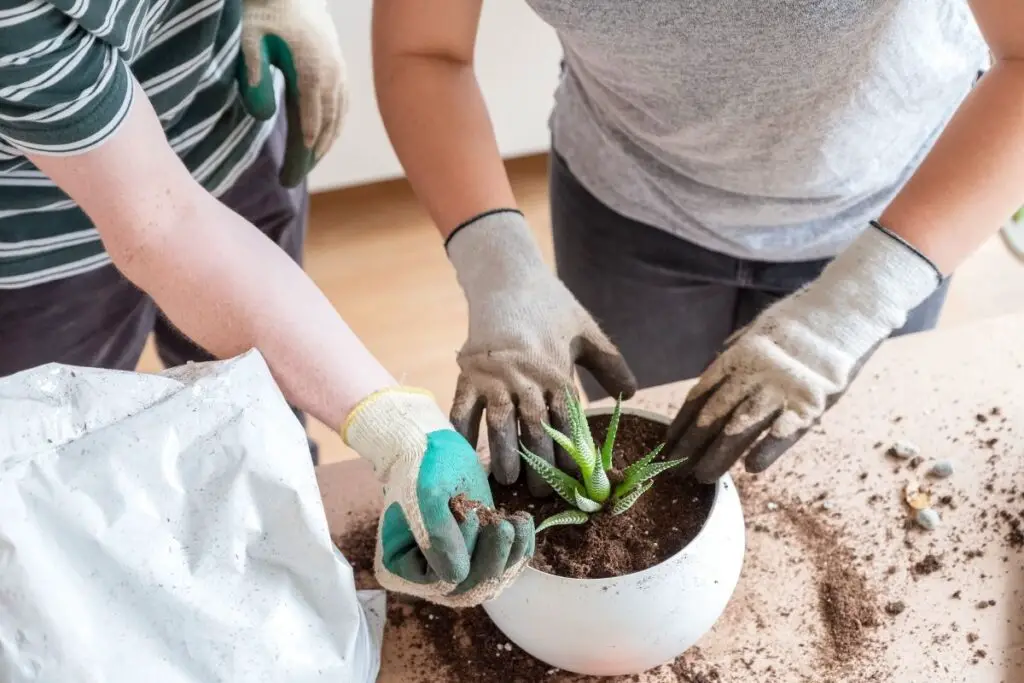
Haworthias should experience a dry period.
If the soil remains wet for a long period, the roots won’t dry and rot.
Always use well-drained soil.
Add ingredients like perlite, pumice, gravel, poultry grit, coarse sand, coir, scoria, etc.
You can even use a soilless medium. It improves drainage more than a medium mixed with soil.
An easy soil mix is a commercial cactus potting mix.
It contains perlite and pumice, encouraging sound drainage.
You can also grow Haworthia only over perlite.
But it will require more frequent water and fertilization.
Some ideal soil mixes are:
Recipe 1:
Recipe 2:
Equal parts of:
- 60% Coarse sand
- 40% Potting soil.
Recipe 3:
- 50% gravel of appropriate size
- 50% of soil, coarse sand, and organic fertilizer
Recipe 4:
- 80% pumice
- 20% coir, 1-3 mm approx.
Recipe 5:
- 40% parts potting soil
- 40% parts small gravel
- 20% part perlite or pumice
Also read: What Soil To Use For Haworthia? (+Ideal Soil Mix)
4. Haworthias must receive warm room temperatures.
Haworthias grow well at temperatures ranging between 65 and 75°F.
It is warm and ideal for Haworthias.
Though Haworthias are called winter growers, they grow actively during the spring and fall with such temperatures.
Bring your plant a few feet back from the window during the hot summers and cold winters.
Don’t put them close to air conditioners, fireplaces, or devices releasing heatwaves or cold air.
5. Don’t keep Haworthias in any high humid areas.
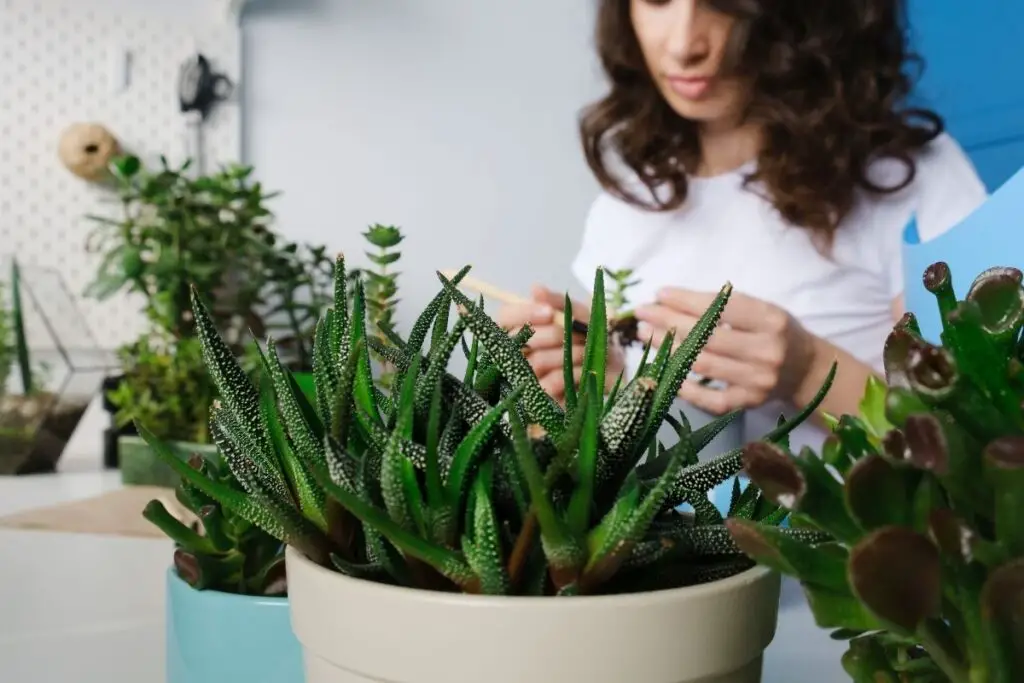
Generally, humidity ranging between 25-40% is good for Haworthias.
But slightly high level, like 50-60%, is good for some varieties, for example, Haworthia attenuata.
This particular Haworthia is an indoor plant and enjoys slightly high humidity.
High humidity encourages fleshy and juicy leaves.
But do not keep Haworthias near the kitchen, fireplaces, bathroom, and aquarium.
It can increase humidity to a great level and result in rotting, mold formation, and fungal infections.
If the plant ever shows signs of low humidity, perform misting or grouping; place pebble trays under the pot to increase humidity.
Make sure not to raise it too much.
They must have good air circulation indoors.
Indoors, the humidity could be more than outdoors.
Outdoor is an open space where they can get lots of airflow despite having humidity.
But indoors, the plant won’t get such open space.
In the process of increasing humidity, don’t forget about ventilation.
If there is any need to increase humidity, make sure the plant receives good airflow.
Keep them near an open window instead of some clumsy or suffocating area.
The cool breeze from the open window will prevent them from suffering from high humidity.
It also stops any fungus from developing.
Also read: Do Haworthia Like Humidity? (Misting & More)
6. Fertilize during their growing seasons.
Haworthias will grow actively during their growing season and thus absorb the nutrients and water you provide them vigorously.
Fertilizing during their growing months will make them absorb it easily.
Though they don’t need much fertilizing, it can boost their growth and increase it to some extent.
Moreover, it provides them with nutrients that can help them stay strong and healthy.
You can use both slow-release and liquid fertilizers.
Indoors, using the right pot is of great concern.
Also read: How To Fertilize Haworthia? (Best Fertilizer+When To Use)
7. Always choose a container as per the plant’s size.
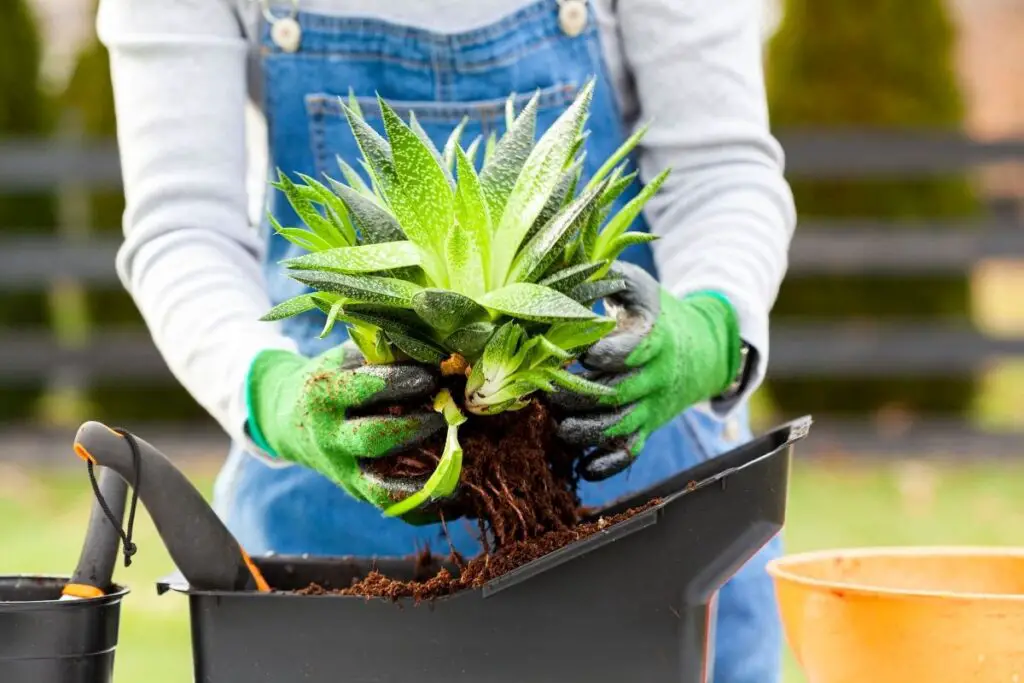
Haworthias are small succulents.
Don’t use an overly big pot.
It will need lots of soil which can take a long time to dry.
The plant’s roots will be wet for too long, which is unhealthy.
The second important thing is drainage.
Always check whether the container has drainage holes or not.
A planter must have drainage holes to drain excess water to prevent root rot. If not, drill one.
8. Repot when they start outgrowing their pots.
When Haworthias grow in the ground, outgrowing doesn’t bother much.
They have lots of space to grow and spread.
But in a container, there is a limitation.
At one point, the root will require more space to grow.
They will grow out of the drainage holes and above the soil surface if they don’t get enough space.
But, you can relax for 2-3 years.
Haworthias are very slow-growers and don’t outgrow frequently.
Repot Haworthias every 2-3 years to give them more space to grow.
Repotting also offers Haworthia new soil stocked with fresh nutrients.
It also gives you a chance to separate offsets and propagate them.
Also read: Do Haworthia Like To Be Root Bound? (+When & How To Repot)
9. Don’t forget to check for pests.
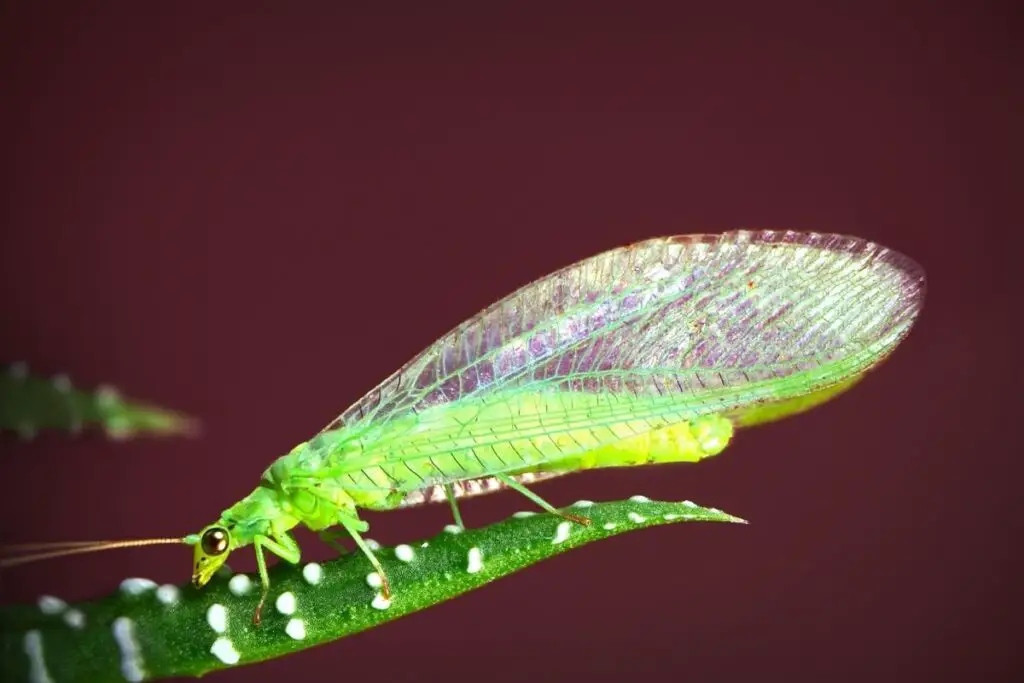
Indoors, there is a very low chance of pest infestation than outdoors.
But, still, you must check them daily.
Mealybugs can invade from the open windows.
Bugs will attack only when your plant experiences damp or dry conditions for a long time.
So, do check your plant.
They may turn your plant white, yellow, or brown.
Treat them with neem oil or rubbing alcohol.
Don’t expose them to direct sunlight while using these products, especially neem oil; else, the leaves will burn.
Can Haworthia be grown outdoors?
Haworthias can be grown outdoors without any issue in zones 9 to 11.
It receives mild, cool weather during the winters, and Haworthias will easily grow in such weather outside without any cold injury.
You don’t have to take them indoors during extreme temperatures.
Don’t forget to shade them during the summers.
Let them stay outside. Haworthias might go dormant, so avoid watering and fertilizing at that time.
Sudden temperature change results in the exposure of Haworthia’s colors, like red.
It is a pigment named anthocyanin which the plant releases to protect itself from such inconvenience.
This is not a very good signal to catch and protect the plant.
Another situation when the plant changes color is sun exposure.
You can grow Haworthias outdoors in any zones.
But you must remember the zones I mentioned earlier before you think of keeping them outdoors the whole year.
When should I bring outdoor Haworthia indoors?
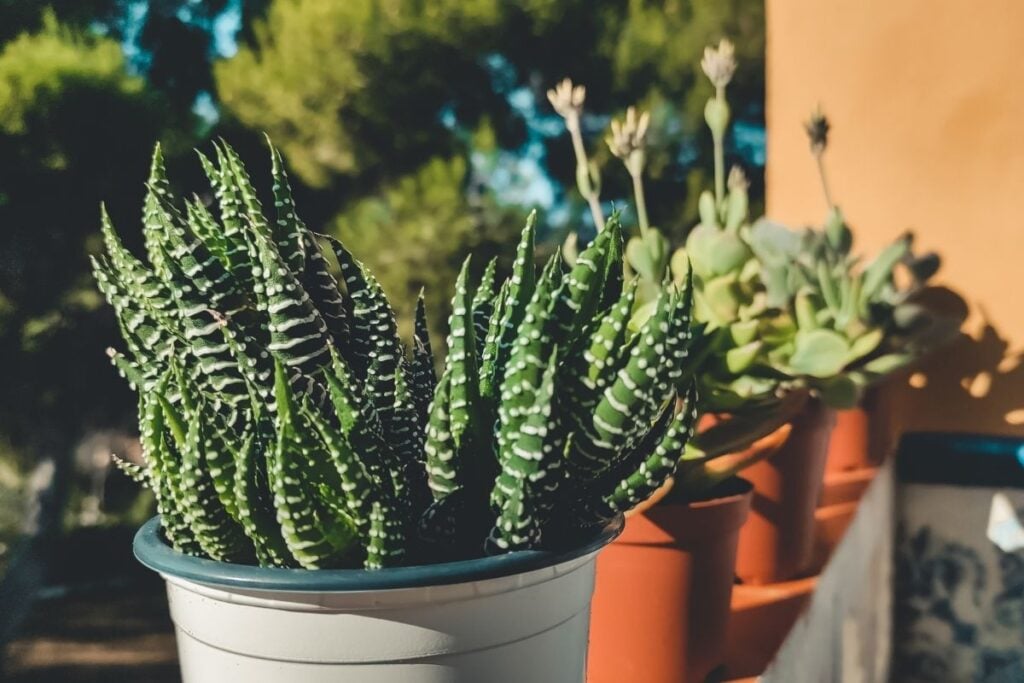
If you are growing Haworthia outdoors in the ground, you can’t dig them up and take them indoors.
It will shock them.
Even if they are in containers, they will get well adjusted to the outdoor setting; they won’t handle the indoor setting easily.
But, if you have grown Haworthias in containers, you can take them indoors during the winters, especially if you belong from zones 3 to 9.
Your region will receive cold and freezing winters.
A temperature below 30°F can harm Haworthias outdoors.
You can take them inside in such weather.
Similarly, can I take the take indoor Haworthias outdoors?
It is quite risky to move an indoor Haworthia outdoors.
An indoor setting is a little mild than the outdoor environment.
They might not be able to accept the challenging temperature and environment outdoors.
But, you can bring them outdoors in the summer, provided you shade them from the direct sunlight spreading intense heat, tiring every living being outside.
Don’t water them.
The advantage of bringing them outside is inactivity.
When the temperature goes above 80°F, it will push them to dormancy, which they might not have inside due to the room temperature.
This resting period encourages good growth during their growing season, the fall.
Bringing them outside during the warm months is good for their growth.
They would grow energetically at warm temperatures (65 to 75°F).
Make sure they don’t get sudden temperature changes.
Whatever advantage you get by bringing them outdoors, you must be careful and gradual while doing it.
Don’t suddenly keep them outdoors for a long period.
Final thoughts
Haworthias are considered both indoor and outdoor plants. They are grown as indoor plants more than outdoor plants. As long as you adequately provide them with their basic requirements, you can grow them wherever you want.
The only difference between an indoor and an outdoor setting is light, location, temperature, and humidity. These are received adequately indoors.
Reference: The Haworthia Society, Botanical Studies, University of Wisconsin-Madison, Sciencedirect, Researchgate, Haworthia Study.
